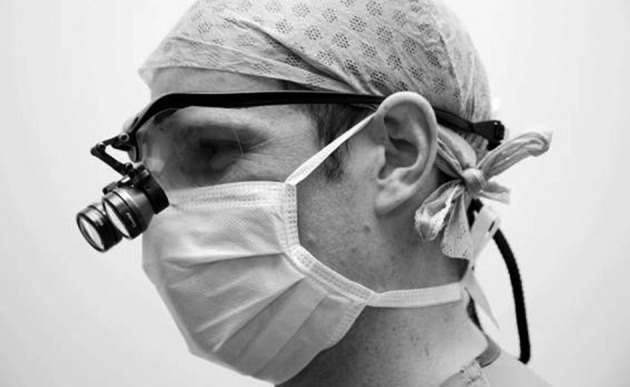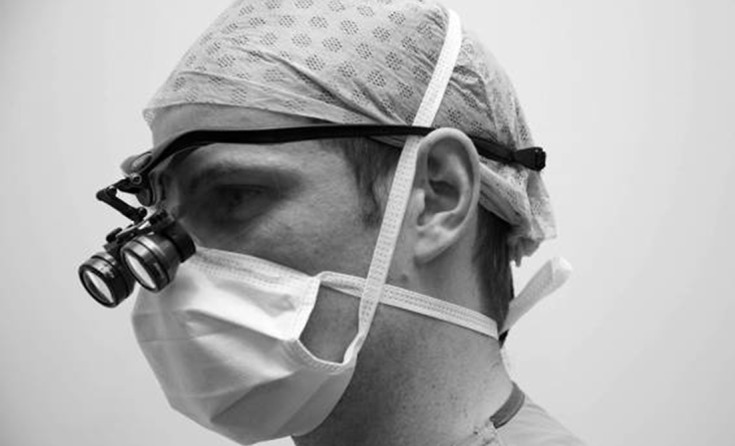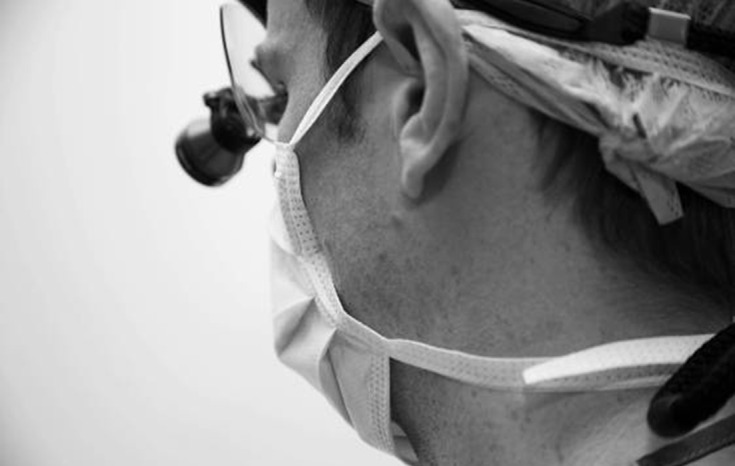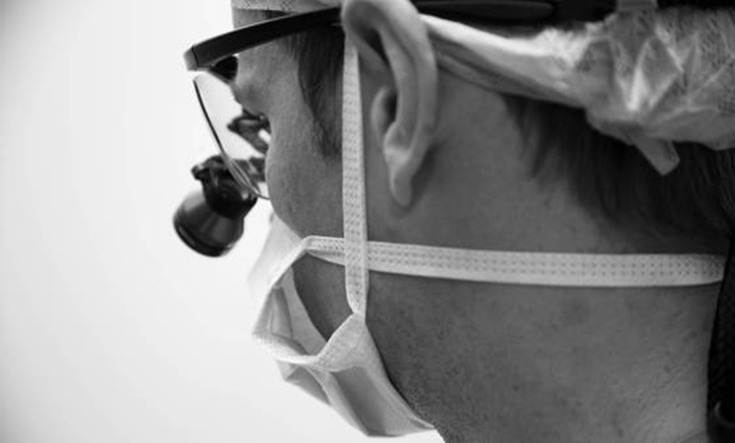Background
Protective eye protection (PEP), including surgical loupes, is essential in many surgical specialties. During non-medical use of PEP, the problem of ‘fogging’ has resulted in reduced visual acuity 1 and this is cited as the main reason for non-compliance. 2 This is reflected with its use in surgery, where fogging of a surgeon’s PEP represents a hazard to patient safety. Multiple attempts have been made to solve this problem, including PEP washing prior to application, 3 adding tape 4 or the use of several masks, 5 but we believe this to be the first description of a novel method that does not involve any further cost or instrumentation.
Technique
The standard technique of tying a surgical mask involves knotting the two ties so they lie above and below the ear in a near parallel appearance (Fig 1). Our method consists of knotting the superior tie first with it lying directly below the ear. The inferior tie is brought up in front of the ear and knotted over the crown of the head (Fig 2).
Figure 1.

Conventional tying of standard facemask with fogged surgical loupes
Figure 2.

Our technique for tying standard facemask
Discussion
This approach allows a closer seal over the nose and along the infraorbital ridge, stopping venting at the superior part of the facemask, and forms two lateral ‘vents’, allowing exhaled air to escape away from the surgeon, the PEP and the patient (Figs 3 and 4). We have described a novel way of tying a facemask to prevent fogging without additional cost or materials.
Figure 3.

Conventional appearance of side of standard facemask on tying

Our technique of tying standard facemask with naturally formed lateral vents
References
- 1.Crebolder JM, Sloan RB. Determining the effects of eyewear fogging on visual task performance. Appl Ergon. 2004;35:371–81. doi: 10.1016/j.apergo.2004.02.005. [DOI] [PubMed] [Google Scholar]
- 2.Lombardi DA, Verma SK, Brennan MJ, Perry MJ. Factors influencing worker use of personal protective eyewear. Accid Anal Prev. 2009;41:755–62. doi: 10.1016/j.aap.2009.03.017. [DOI] [PubMed] [Google Scholar]
- 3.Malik SS, Malik SS. A simple method to prevent spectacle lenses misting up on wearing a face mask. Ann R Coll Surg Engl. 2011;93:168. doi: 10.1308/003588411X12851639107313b. [DOI] [PMC free article] [PubMed] [Google Scholar]
- 4.Karabagli Y, Kocman EA, Kose AA, et al. Adhesive bands to prevent fogging of lenses and glasses of surgical loupes or microscopes. Plast Reconstr Surg. 2006;117:718–19. doi: 10.1097/01.prs.0000197904.83274.bb. [DOI] [PubMed] [Google Scholar]
- 5.Patil SR, Weighill FJ. The use of two face masks to prevent clouding of spectacles and surgical visors. Ann R Coll Surg Engl. 2000;82:442. [PMC free article] [PubMed] [Google Scholar]


